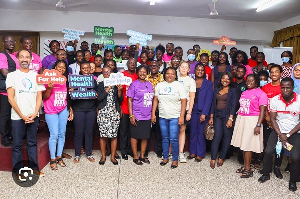The electricity industry is characterized by three main features. First, because electricity can not be stored economically in large quantities, its supply and demand must coincide and be maintained in real time. Second, supply (production and delivery) of power to the consumer is often characterized by constraints - the transmission and distribution systems have their designed limit. The transmission losses, which occur in the form of heat, are proportional to the square of the current that passes through the lines. This means that the transmission and distribution lines can “meltdown”, if current that passes through them at any time is higher than what it was designed for. The consequence is total blackout or brownout, which occur often in Ghana. Production resources have their generation limit and during high demand period the supply becomes perfectly inelastic. Loss of generation plant, or low lake levels as is the case in Ghana (because high dependence on hydro) could make the problem worse-. Third, the electric system is highly capital intensive and requires long lead times for new expansion.
Because of these characteristics, not much can be done in a short-term when demand is so high that it can not be supported by the supply conditions. The only way to avoid the collapse of the (whole) system in a short-term (seconds, minute hours) is to disconnect part of the consumers from the grid or encourage consumers themselves to reduce their demand for power. In fact, most of power rationing in Ghana could easily be avoided by investing in the demand side rather than the supply side. So far, all attention has been on infrastructure expansion– expansion of Takoradi power station with additional 110 MW at the cost of $220 million, building 300 MW thermal power plant at Tema, 400 MW Bui hydro, building 330 KV Aboadze-Tema transmission lines at a cost of $60 million, Kumasi-Sunyani 161 kV transmission line at a cost of $30 million, etc.
It appears the government is the main investor in the power sector because the sector is not lucrative enough to attract private investment. Peak generator that run on natural gas and diesel oil are very expensive and thus investment may occur only when very high prices can be expected, and if there would be no risk of price cap by politicians. Because the government is the main investor, it could easily channel some of the money into demand side to help deal with peak demand problem instead of the usual supply-side upgrading. Integrated resource planning is the word. Most of the electricity we generate is used in our households, we can easily see the impact of the demand response if we are able to encourage and get each household to switch off one-60 Watts electric bulb when supply is constrained. The aggregate, of which, could avoid some of the expensive, and polluting thermal plants being constructed.
Economics of investing in the demand side
Economic theory asserts that the most efficient use of resources occur when consumption decisions are based on prices that reflect the marginal cost of supply. This price is normally defined by the intersection of demand and supply curve. In electricity generation, resources are ordered from cheapest to the most expensive. Expensive and polluting thermal power plants are fired after generation from hydro sources has been exhausted. - The chart below shows a typical generation model - . That is to say that, when demand approaches installed generation capacity, each additional increment of demand imposes increasingly more cost to the generation company than the previous one. In other words, the marginal cost of electricity becomes most sensitive to changes in demand when demand is already high.
On the demand side, electricity demand does not differ from most goods. The demand for electricity exhibits declining marginal value (i.e., the marginal value of additional consumption declines as consumption increases). Electricity demand is characterized by a downward-sloping line, regardless of how electricity is priced. But, if the price that consumers pay is small and never varies, demand appears to be perfectly inelastic, and is characterized by a vertical (shown in figure below as QPeak). Economic way to achieve demand reduction during periods of supply constraints is to increase prices. When prices are high, most consumers will reduce their demand for power. This will result in a shift of demand curve to left (shown in figure below as Q’peak). If demand reduction is not achieve during this peaking period, investment in peaking generator or power rationing has to occurs to avoid the collapse of the whole system. The graph below shows a shift in demand from QPeak to Q’peak due to high price. The difference QPeak - Q’peak may be necessary to maintain supply-demand balance.
However, this may not work in Ghana. Low income levels in the residential sector and the fact the electricity rates in Ghana do not meet the two of the three priority objectives of rate design: 1) meeting utility revenue requirements, 2) economic efficiency, achieving demand response with high prices could result in a more chaotic situation. At the moment, ECG and VRA are not meeting their revenue requirement and so economic efficiency still remains to be achieved. Though price may be part of the solution in Ghana, it should not be the main solution. What can be done now in Ghana is to appeal to consumers (through the media) to reduce their demand during such period. Investment in energy-efficient electrical appliances can also reduce the total load. Other solutions will require research into human behavior and how to live and function under electricity supply constraints.
Life in resource constrain
My Professor, Susan Krumdieck, is working on the theory of constraint which can be applied in Ghana. She believes that usage of resources must be change from a ‘demand and supply’ setting to one in which each user is either allocated a given amount of, or they choose to purchase a set ‘ volume of resources’ and based its use to that allocated portion. In fact, electricity use should be based on a principle such as that of pre-paid electricity meter or prepared telephone card. We need a system (a device) in Ghana that can communicate to the people, the available resources remaining, the rate and the prediction of excesses or shortfalls. - A System that can predict future demand and supply pattern, and can inform consumers about their responsibility in ensuring the continuity of supply -. Communication between the supplier and the consumer is possible way to deal with our electricity constraints.
Analogy
A student who receive a certain amount of money per month, say, ¢ 600,000, will be able to buy food, pay rent, entertainment, and other required necessities. The student would have budgeted that rent would cost ¢280,000 for the month. Food would cost ¢200,000 leaving ¢120,000 for power, entertainment, transportation and others. Generally, the student would continually manage his/her funds to ensure that he/she has a little left over at the end of the month for emergencies, but in most cases, the ¢600,000 per month is never exceeded. If the monthly limit was changed to ¢700,000, it is likely that the funds remaining in the student’s account would be similar to the ¢6000 per month case. In fact, if monthly limit were reduced, the student would achieve more economic living, yet still maintain the same standard of living that he/she initially obtained, quite possibly not require more then than the ¢500,000 each month.
With a set limit of ‘credit’ that is known by, displayed to and that can be easily and continually checked and analysed by the consumer, a new lower overall net consumption ‘volumes, can be achieved.
The future remains a challenge
Researching into how to function under resources constraint now will help Ghana know how to live in resource constraint when the whole world gets there. To fulfill all our electricity need either now or in a future remains a big challenge. We are already in peak oil period. World static range of natural gas might be shorter when oil peaks. This means that, even if we are able to build more thermal power plant, firing fuel or resource may not be available in the near future. Water bodies around the world are loosing a significant portion of their volumes to global warming. Akosombo dam is not an exception.
Since there is no relationship between wellbeing and growth, we can function well when we know in advanced, how to do with little before we come face to face with the reality. If we refuse to learn, resources will be stretched too thin for the quality of living that society has deemed unacceptable. It is obvious in the energy industry where Ghanaians are frequently faced with blackouts and brownouts. The future of adequate electricity supply in Ghana, and in fact in the whole world, looks uncertain.
References
1) Power outage on January 7th and 8th 2006 in Ghana, some policy measures being implemented by the ministry of energy to address power problems in Ghana. http://www.ghana.gov.gh/dexadd/power_failure02.pdf Last accessed 20.05.07
2) For more on price elasticity, see Jae Edmond & John Reilly, 1985: Global energy assessing the future pp 62
3) Felix Ankomah Asante & Ezekiel Attuqueye Clothey; 2006, Electric power in Ghana Africa Issue 3 2006
4) Write Author for details.; familygyamfi@yahoo.co.uk
5) Press statement by Prof. John Evan Atta Mills, a flag nearer of NDC on the current electricity crises in the country. See http://www.attamills2008.com/Prof.doc ; Last accessed 20.05.07
6) Benefits of demand response in electricity markets and recommendation for achieving them. US DOE, 2006
7) Write Author for details.; familygyamfi@yahoo.co.uk
8) Bonbright, J.C., 1961, Principles of utility rates, New York: Columbia University Press
9) Susan Krumdieck & Kerstin Eiselbrecher, 2006. Exploration of service – availability economic model for resources-constrained market
10) See Kenneth S. Deffeyes book beyond oil



















